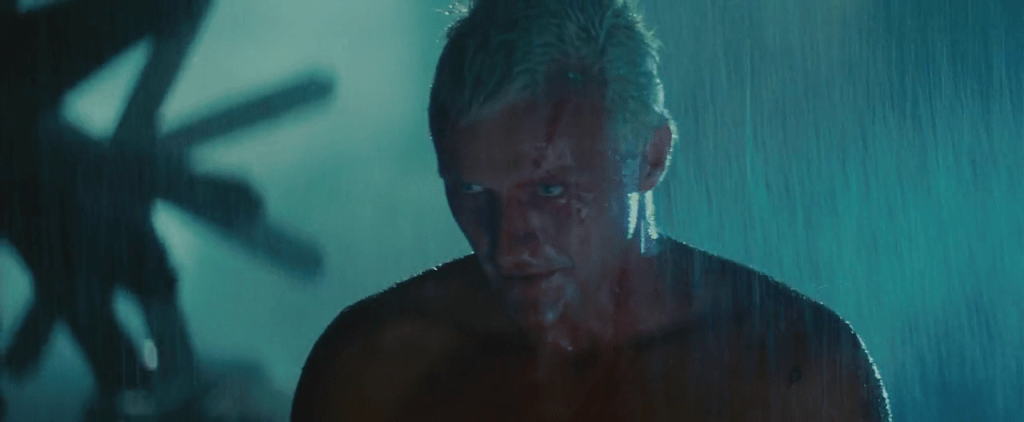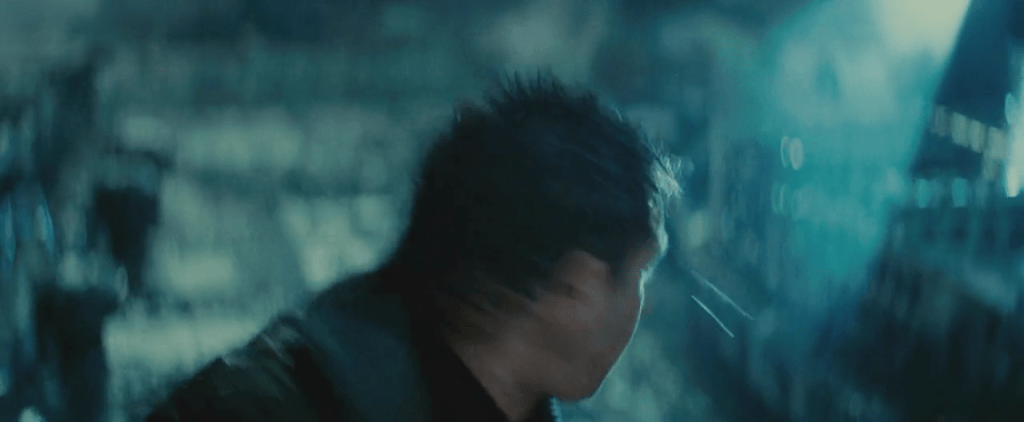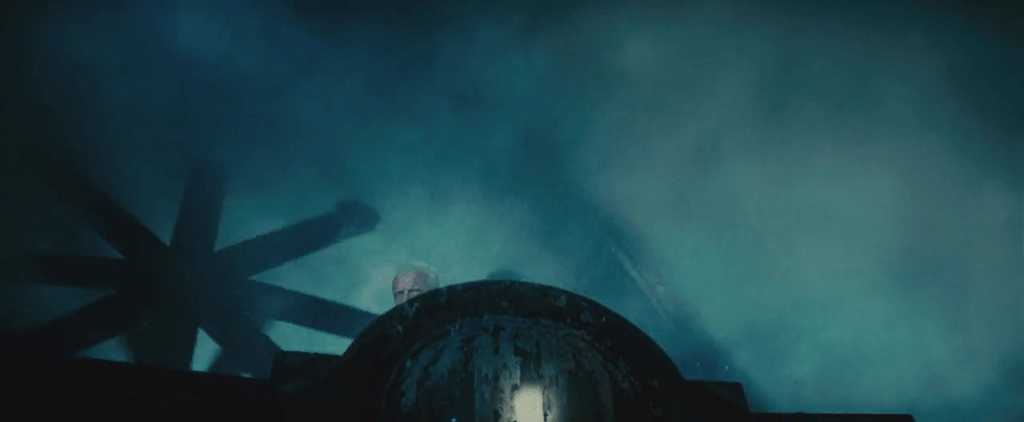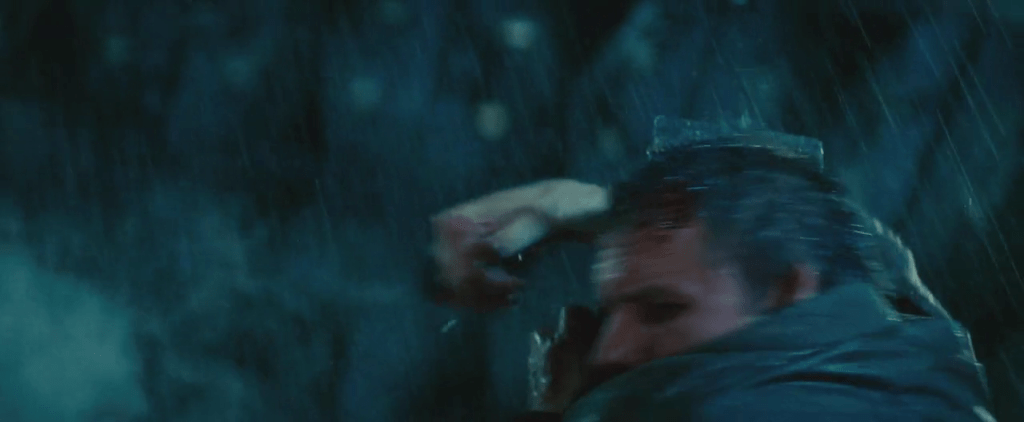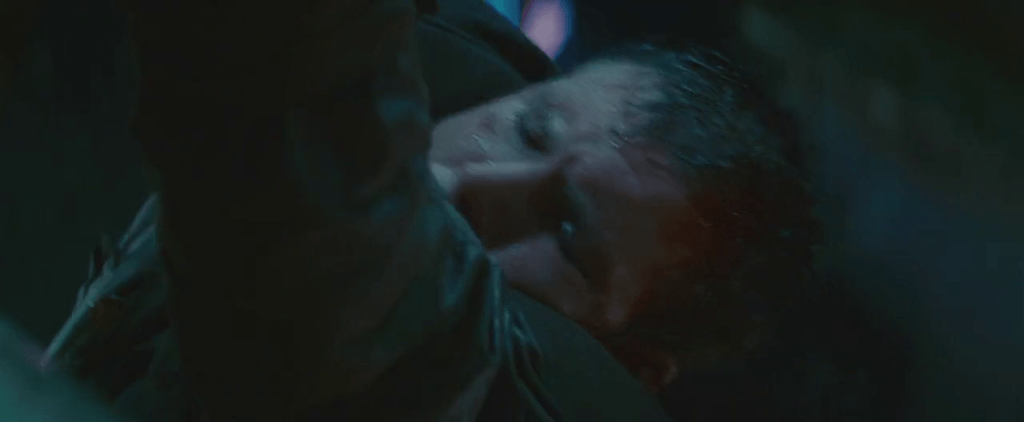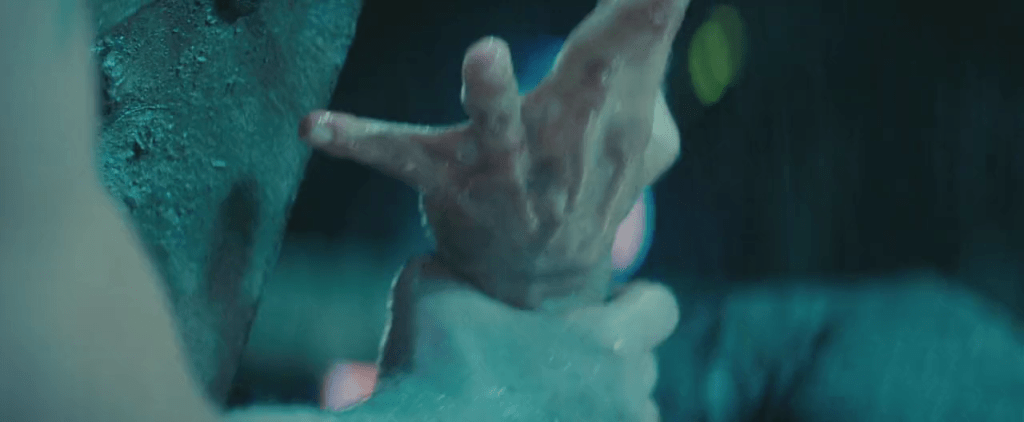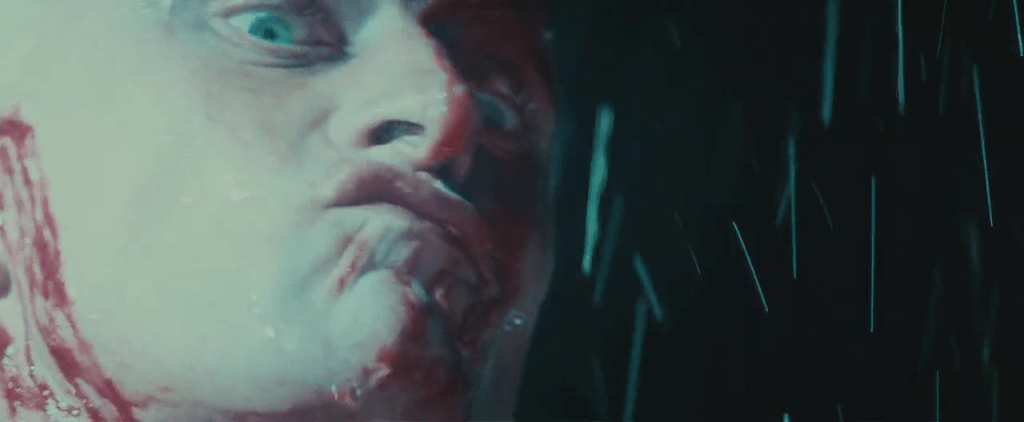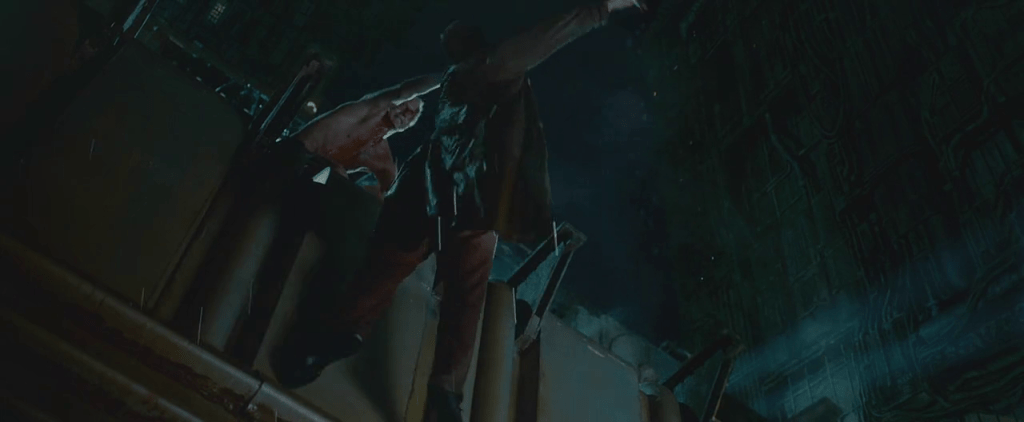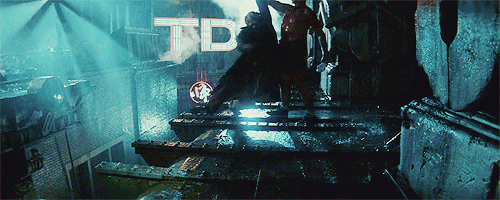
“I want more life,” Roy tells Elden Tyrell. Well, that was a fast game of what they want! Roy wants to live longer than four years.
But survival, or ‘more life’, is not on Reiss’ 16 desire list. Neither is shelter, money, or spirituality. These things make up a considerable part of our lives! But in Reiss’ research, these are not desires themselves. Instead, our desires are WHY we want survival, shelter, money, or spirituality. The 16 desires motivate us at an even deeper level. The great thing about using the Reiss model is we can discover why Roy wants more life.
Let’s see how they introduce Roy to the audience.
“What is this?” Deckard asks as Vangelis’s synthesizers swell ominously.
“Nexus 6. Roy Batty.” Police Captain Bryant says. “Incept date 2016. Combat model. Optimum self-sufficiency. Probably the leader.“
This description is fascinating because we get the parameters of Roy’s creation. If we followed these details, we should easily be able to see what motivates Roy. Here are the features Roy’s creators wanted:
- Independence (Freedom, Self Reliance, Determination)
- Vengeance (Compete, Retaliate, Defeat, come from behind)
- Power (Domination, Control, Authority)
But something seems off. That isn’t Roy Batty.
He isn’t fiercely independent; he is usually with someone else. Roy does not seem motivated by vengeance, either. He has plenty of chances to get revenge on Deckard, but only breaks two of his fingers for the female replicants Deckard retired. And if power were a motivation, Roy should be able to dominate the weaker-minded Zhora, Pris, and Leon, but he refuses to. He does not lead the replicants through his superior mental prowess. Come to think of it, Roy should be able to dominate EVERYONE in Blade Runner. He’s as smart as his genius creator. Maybe smarter. None of those desires seem right for Roy!
Let’s try again, but this time, let’s look at what Roy says.
“You better get it up, or I’m gonna have to kill ya! Unless you’re alive, you can’t play, and if you don’t play…”
Roy tells us here the reason for living is play. Does Social Interaction work as Roy’s primary desire? I think it does. He wants to play with his friends. He cries and struggles to find the right words when he tells Pris, “Ahh… There’s only two of us now.”
He even manipulates J.F. Sebastian by becoming his friend. Roy could easily torture Sebastian but decides not to. Pris helps, saying, “We need you, Sebastian. You’re our best and only friend.” as well. Roy then makes Sebastian laugh by playing with some eyeballs lying around the apartment. “We’re so happy you found us!”

Roy does not just want more life for himself. He wants it for his friends as well. “If we don’t find help soon, Pris hasn’t got long to live. We can’t allow that,” Roy tells Sebastian. Roy then walks over to a chessboard and asks, “Is he good?”
Sebastian asks, “Who?”
“Your opponent” Roy clarifies. Roy will even use games and play to reach his creator.
JF even introduces Roy to Tyrell saying, “Mr. Tyrell. I— I brought a friend.”
Roy howls in despair after losing Pris. With no friends left, Roy spends the last few moments of his life playing a game with Deckard. He sings, he recites nursery rhymes; he gives Deckard back his gun and lets him take a free shot, but when Deckard falls off the side of the building, the game is over. Deckard may not be a genuine friend, but he is the only social interaction Roy has left at the end of his life.
This leads us to Roy’s next major motivator: Romance. He says, “Chew, if only you could see what I’ve seen with your eyes!” and he tells Deckard, “I’ve seen things you people wouldn’t believe!”
Roy describes some of the beautiful things he has seen in his brief life, “Attack ships on fire off the shoulder of Orion… I watched C-beams glitter in the dark near the Tannhäuser Gate.” Roy is so enthralled by the beauty of it all he makes poetry. Even as his body is shutting down, Roy describes his situation with a poetic simile, “All those moments will be lost in time, like tears in rain... Time to die.“

I think Roy’s third desire is idealism.
He recognized the injustice his creators had inflicted on him and his friends with a four-year life span and wanted to fix it. How could life be so beautiful and so short, while the replicants live in fear as slaves? Roy thought he could change the situation for his replicant friends, even if it was incredibly difficult. They at least had to try, even if it meant sacrificing the last moments they had. Roy is shocked to find out there is no way he can get more life.
“You were made as well as we could make you,” Tyrell tells Roy.
“But not to last,” Roy laments.
Roy doubts his actions. “I’ve done questionable things,” he says. Now that he knows nothing can save him or Pris from their expiration dates, was it all worth it? Roy isn’t sure. But because his creators cannot fix the problem, Roy kills them for what they have done. I don’t think Roy kills Tyrell and Sebastian for personal revenge but to right the injustice they inflicted on the replicants by creating them to be more human than human, but with such a short shelf life. He even apologizes to Sebastian, his friend, before killing him. It does not seem personal with Roy, but ideological.

Roy thinks constantly about ethics, questioning his own motivations and others. “Not very sporting to fire on an unarmed opponent,” Roy says after dodging Deckard’s first bullet. “I thought you were supposed to be good. Aren’t you the good man? Come on Deckard. Show me what you’re made of.” If play and justice motivate Roy, you better play fair. At least as fair as you can against a superhuman.
Roy breaks two of Deckard’s fingers for killing Zhora and Pris. Punishment must be inflicted, but the replicant women only had a short time left. Deckard did not create them and was not responsible for their brief lives. With Deckard’s punishment already exacted, Roy had no reason to punish him further. So instead, he plays a game. Roy sets the parameters of their play and gives Deckard his gun back. “Come on, Deckard, I’m right here, but you’ve got to shoot straight.” Deckard takes a shot with his off-hand, and Roy dodges Deckard’s bullet again at point blank range, a blood trail oozing where the bullet grazed his temple.
“Straight doesn’t seem to be good enough! Now it’s my turn. I’m gonna give you a few seconds before I come. One, Two. Three, Four.” It’s the only way this game will be any fun. Roy plays with a handicap, it’s only fair. It is the sporting thing to do. Deckard is no match for Roy, but no one is. Roy mourns Pris’ death, kisses her while Deckard runs, and howls in agony now that he is alone, but then Roy finishes his count, and the game with Deckard continues. Roy is happy to play as long as he can. He even puts a nail through his palm to play a little longer.
And when Deckard spits in Roy’s face as he falls, Roy shouts, “Kinship!” and catches him. Even if only for a few moments, Roy found a playmate he could save. And Roy didn’t want to die alone.
So here are my guesses for Roy Batty’s primary desires:
- Social Contact (Friendship, Companions, Group play)
- Romance (Beauty, Art, Attraction)
- Idealism (Belief, sacrifice, Justice, and making things right)
This feels more like Roy to me. A playful and friendly romantic who will sacrifice trying to repair what is wrong. One of the most difficult things in trying to understand our desires is how much internal conflict there is between them. The desires feed off one another, giving dimension and depth to our motivations.
There is also a conflict between what we have and what we want because often they do not match up. Roy may be powerful, but he does not want power. By design, he may not need help; but he wants friends. And while he could get revenge, he’d rather repair injustice to help his friends. And what a pity it is that for all the amazing things he has seen, those moments will all disappear without being shared. Roy loses all his friends and dies on top of a dingy, abandoned, apartment complex, unable to fix the replicant’s condition, with only his would-be killer to talk to. But at least Roy does not die alone.

And as a side note, you may notice how similar Roy Batty’s list of desires is to Luke Skywalker’s, but instead of Honor Roy has Romance. Luke is slightly more idealistic than Roy, but their desires seem fairly close. The 16 desires are not good or evil. Would Roy have been the hero in a different story? Maybe he already was.










